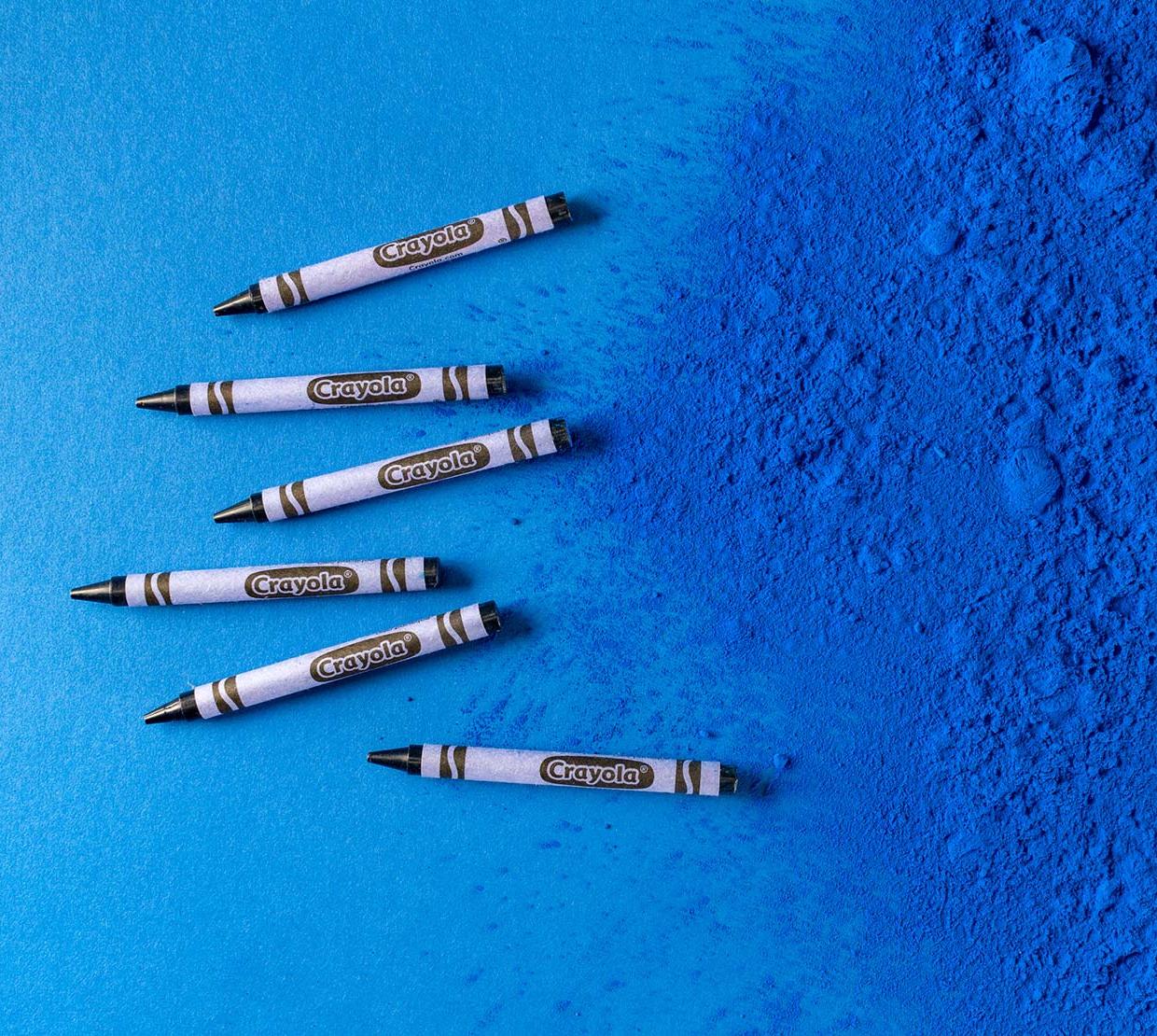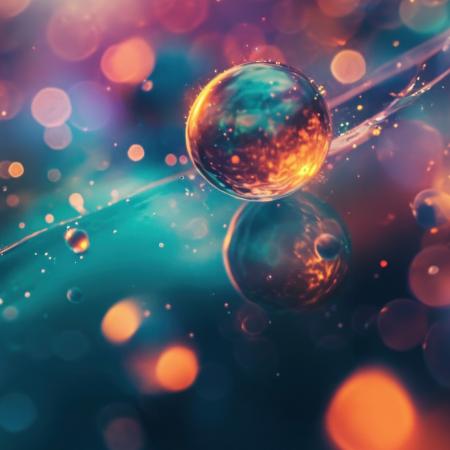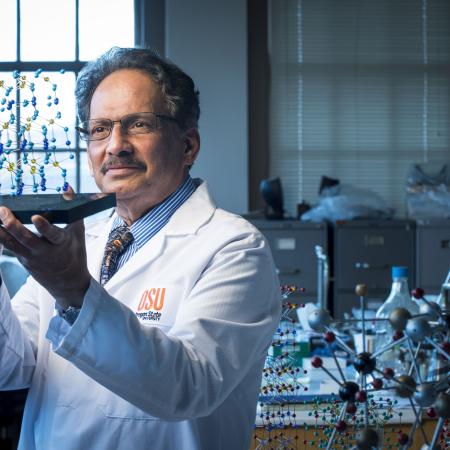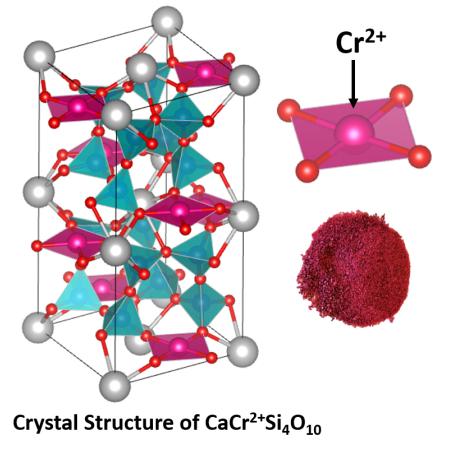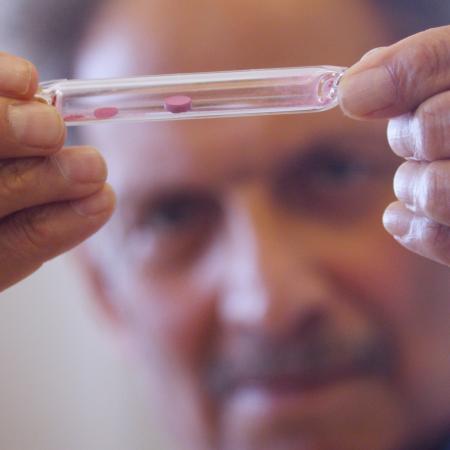Chemistry professor Mas Subramanian's 2009 discovery of a vibrant and durable blue pigment, called YInMn because of its composition from the elements Yttrium, Indium, Manganese and Oxygen, is generating a new wave of worldwide media attention and interest.
News of Subramanian's pigment discovery went viral recently following a Tech Insider online story and video. The story has reverberated across the Internet with more than 12 million shares at last count. YinMn is everywhere from Cosmopolitan, Slate, New York Magazine, TIME magazine and the Huffington Post to The Daily Mail, India Today, Mid-Day (Mumbai), BBC/Mundo and more. NPR devoted an in-depth feature on YInMn blue, which includes interviews with the Shepherd Color Company, Forbes Pigment Collection at the Harvard Art Museum and Pantone, LLC, the world-renowned authority on color.
Subramanian is amused at being called "a mad scientist" on th'nkdesign.com, which hypothesizes about the psychology of colors. NerdAlert.com has created an engaging Youtube video explaining the science involved in the now famous blue pigment that is easily digested by the general public. Futurism event created a cartooned caricature of the chemist.
The materials chemist has fielded calls from media worldwide and has been interviewed by Time magazine, NPR, Good Morning America and others attempting to satiate the public's appetite for this unique scientific discovery. Mirror.co.uk is calling the pigment the best color in the world and has scientists raving about the new blue.
